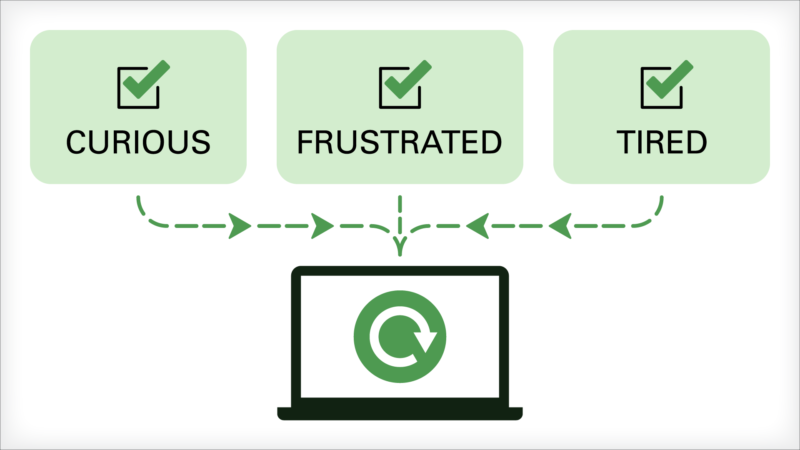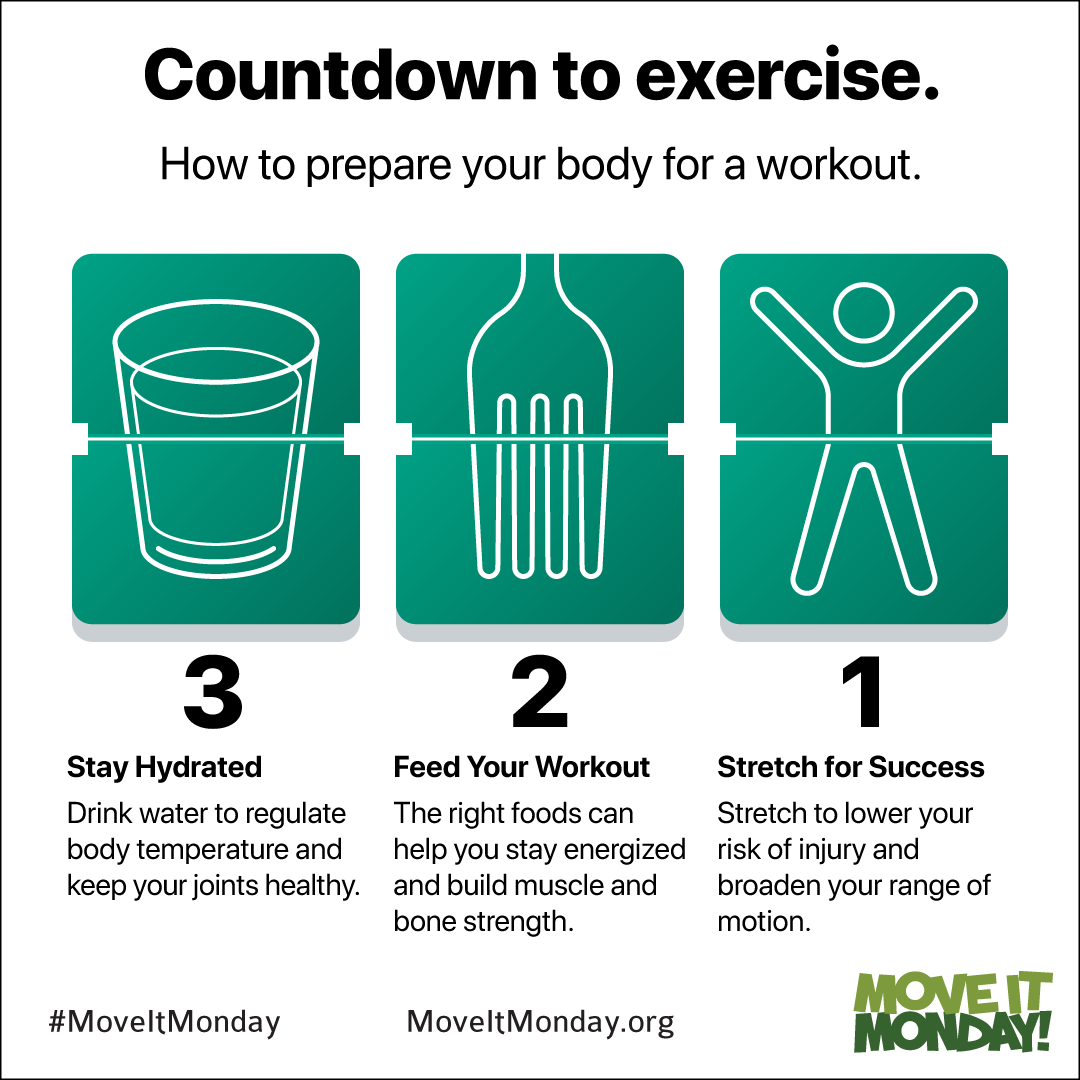How to Prepare Your Body for a Workout
Are you looking to start or return to a normal exercise routine? By making the decision to be more physically active, you’ve already taken the first step towards a healthier you. But in order to establish a consistent exercise schedule, you need to prepare your body.
Thankfully, preparing for physical activity is pretty simple; you just need to focus on a few specific areas. By putting in a little time beforehand, you’ll reduce your risk of injury and get the most out of your workout. This Monday, learn all you need to know about readying your body and mind for exercise.
Stay Hydrated by Drinking Water
The human body depends on water to help get rid of wastes, regulate temperature, keep joints healthy, and protect sensitive tissues. Being dehydrated will make you feel tired and drained of energy—not exactly how you want to feel before a workout.
So how much water should you drink? Well, that depends on your body size, the weather, and the duration/intensity of exercise. Feeling thirsty is a clear sign of dehydration, but you can also check the color of your urine: pale or clear urine is an indication that you’re well hydrated, while a dark yellow color is a sign that you should drink more water.
Power Your Workout with Proper Nutrition
What you eat before and after you exercise is almost as important as the workout itself. Food is your fuel—it gives you the energy necessary to be active and focused, and it also provides the nutrients required to build muscle and bone strength, as well as help the body recover post workout.
Before exercising, try to stick with eating carbohydrates that won’t upset the stomach, such as bananas, oatmeal, or whole grain bread. For a post-workout meal, eat a combination of protein, carbohydrates, and fats. Foods high in protein allow the body to build new muscle tissue, while carbohydrate-rich foods are better for after a run or another endurance exercise. Refuel your body with foods like beans, quinoa, or Greek yogurt.
Warm Up and Cool Down
Starting physical activity with a warmup and concluding it with a cooldown can help you improve the quality of your workout. A warmup raises your body temperature and increases blood flow to the muscles. This improves the stretchiness of the muscle tissue and can help reduce muscle tightness, pain, and risk of injury. Although there’s no strict definition for what constitutes a “warmup,” the basic idea is doing an activity or exercise at a slower pace (stretching, using lighter weights) to help prepare the body for more intense movement.
After moderate physical activity, a 10-minute cooldown allows body temperature, heart rate, and blood pressure to return to their normal levels. Cooldown exercises, like stretching, walking, foam rolling, and deep breathing, can help lower your risk of injury and reduce stress to the heart and other muscles.
Stretch for Success
Stretching is more than just a warmup. By improving your flexibility through stretching, you are effectively lowering your risk of injury and pain, broadening range motion, improving posture, and bettering body control and stability. And most importantly, being more flexible makes every-day activities easier: from getting out of bed to walking up stairs to reaching a high cabinet.
Stretching seems simple—and it is—but there are some general guidelines to follow to help you avoid injury. First, warm up with a few minutes of brisk walking. When starting a stretch, always moves gently and smoothly into position, stopping when you feel any sort of sharp pain. Initially, you’ll want to hold stretches for between 10 and 20 seconds, but as you get more comfortable, you can extend the hold time for as long as 30 seconds. Don’t know where to start? Check out our list of beginner stretches and stretching tips.
Make this Monday your day to get active. For more information on how you can prepare yourself for exercise, click here.

Refresh Every Monday with Our Check-Up Tool
Our interactive Healthy Monday Refresh Check-Up Tool is designed to help you assess how you’re feeling every Monday and see options for actions you can take to move toward you wellness goals.
